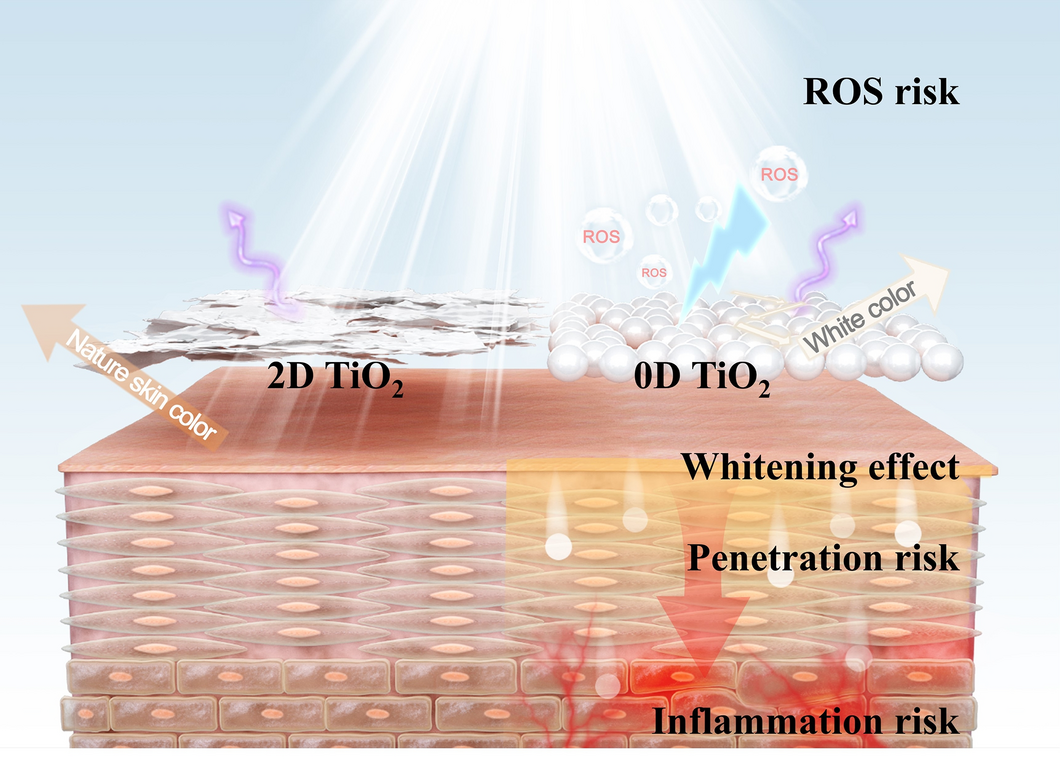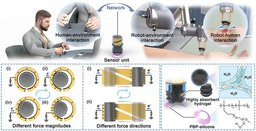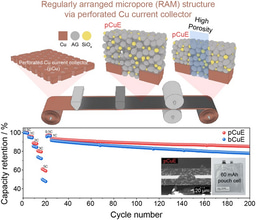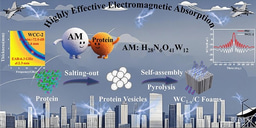
A multi-institute team led by Professors Ling Qiu, Baofu Ding and Hui-Ming Cheng has unveiled a two-dimensional titanium-dioxide sunscreen platform that erases the century-old trade-off between safety, efficacy and aesthetics. Published in Nano-Micro Letters, “Two-Dimensional TiO2 Ultraviolet Filters for Sunscreens” demonstrates how ultra-thin, micron-wide flakes outperform traditional nanoparticles on every metric that matters to consumers and regulators alike.
Why 2D Wins
- Superior Transparency: Atomic-thin sheets (1.2 nm) transmit >80 % of visible light, achieving an unprecedented Natural Appearance Factor (NAF) of 0.99—virtually indistinguishable from bare skin.
- Negligible Penetration: Lateral size of 1.6 μm blocks entry through the 300 nm stratum-corneum gaps, cutting skin permeation from 77 % (0D) to <1 %.
- Phototoxicity Shutdown: Layered architecture shortens exciton lifetime from 30 ns to 1 ns, slashing ROS generation 50-fold and eliminating DNA-damage risk.
- Tailorable Spectrum: Safe metal doping (e.g., Fe) red-shifts absorption to cover UVA/UVB without compromising transparency or safety margins required by the Scientific Committee on Consumer Safety.
Engineering the Invisible UV Filter
- Scalable Exfoliation: Liquid-phase ionic intercalation of layered titanate followed by dialysis yields kilogram-scale, dermatologically safe aqueous dispersions.
- Formulation Roadmap: A 4 % w/w emulsion passed human-patch tests—no whitening on hands, no epidermal thickening in nude-mouse UV trials, outperforming commercial creams.
- Color-Matched Design: By varying dopant levels, the same flake can be tuned to match Fitzpatrick skin types I–VI, sidestepping the one-shade-fits-all limitation.
Next-Gen Performance Metrics
- Broadband Protection: Fe-doped 2D-TiO2 expands absorption to 380-400 nm, covering the entire UVA range that accelerates photo-aging; SPF 50+ is achieved with only 4 % loading.
- Thermal & Photostability: Layers remain intact after 72 h under 1-sun irradiation at 50 °C, whereas organic filters lose 50 % efficacy within 4 h.
- Mechanical Flexibility: Suspensions survive 1000 bending cycles on textile substrates, enabling wearable UV patches for athletes and infants.
Regulatory & Market Trajectory
- EU SCCS Compliance: All safety dossiers—including ROS, penetration and ocular irritation—are filed; positive opinion expected Q3 2025.
- Pilot Production: 100 kg/month line is operational at Shenzhen Institute of Advanced Technology; cost projected at < $15 per kg, competitive with nano-TiO2.
- Consumer Trials: 200-participant double-blind study shows 94 % prefer 2D-TiO2 formulation over leading mineral sunscreen for “no white residue.”
Beyond Sunscreen
- Automotive Coatings: 92 % visible-light transmission windshields block 99 % UV-B, reducing interior fading and driver skin exposure.
- Smart Textiles: Integrated into nylon fibers, fabric retains 80 % UV protection after 50 wash cycles, targeting outdoor apparel market.
- Medical Devices: Transparent, sterile UV-barrier films for neonatal incubators and phototherapy units under joint development with Children’s Hospital of Shenzhen.
By turning TiO2 from a visible, photocatalytic nuisance into an invisible, photoinert guardian, the Cheng team redefines what safe sun protection looks like—literally nothing at all.
Follow the Topic
-
Nano-Micro Letters

Nano-Micro Letters is a peer-reviewed, international, interdisciplinary and open-access journal that focus on science, experiments, engineering, technologies and applications of nano- or microscale structure and system in physics, chemistry, biology, material science, and pharmacy.






Please sign in or register for FREE
If you are a registered user on Research Communities by Springer Nature, please sign in